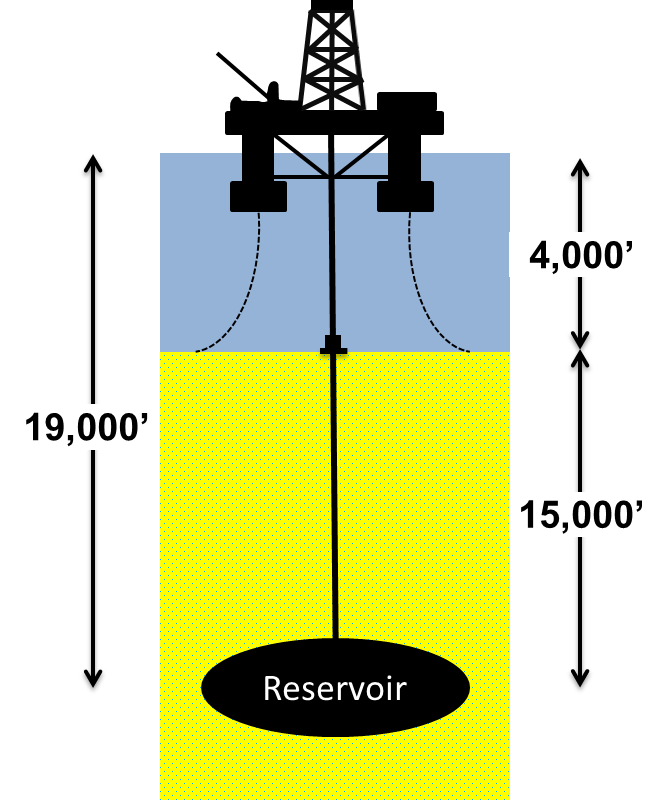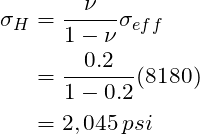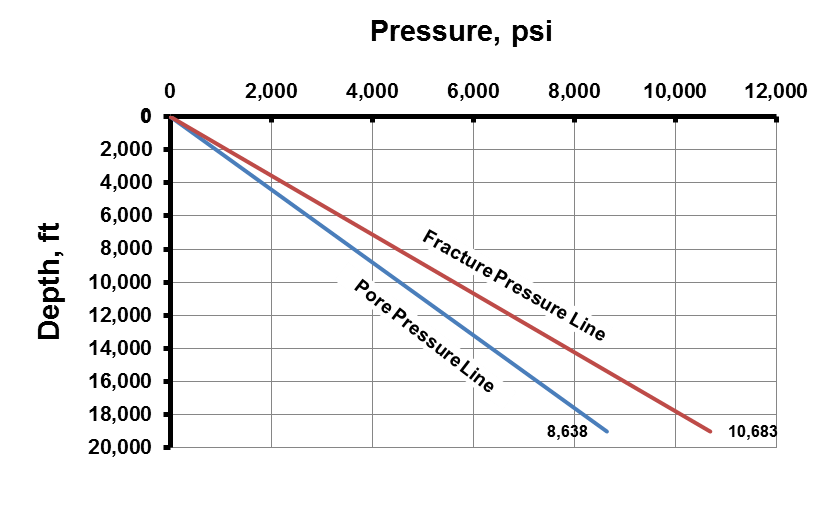Back to: General Petroleum Engineering
Geologist just identified a huge reservoir offshore from a seismic survey. Everybody in the office is upbeat and ready to tap into the resource, however very little information is known about the area. The closest well drilled in the area is 350 miles away and it’s owned by a competitor that is reluctant to share any information about the well. The drilling team has come to you needing an estimate of reservoir pressure, reservoir temperature, and a fracture gradient and pore pressure survey. They are in a hurry and need estimates fast because the drilling rig is going to be on site in the next few hours. The only information that they provided was the total vertical depth (TVD) of the well and the depth to the bottom of the sea floor. How would one approach this? The sea level depth and formation depth is illustrated below:

In most cases, petroleum engineers deal with a high level of uncertainty. In this case, one must make rough estimates with minimal data. Best practice would be to research papers and try to gather information on the area, but in this case the engineer does not have that luxury or the time to do so and must apply simple rules of thumb.
Estimate Reservoir Pressure:
Recall that the pore pressure gradient of water (![]() psi/ft) can be used to estimate the reservoir pressure. Since we are dealing with saltwater, one can assume a a slightly higher pressure gradient for water. I will assume a specific gravity of 1.05 for the saltwater. With this assumption, the reservoir pressure can be determined as shown below:
psi/ft) can be used to estimate the reservoir pressure. Since we are dealing with saltwater, one can assume a a slightly higher pressure gradient for water. I will assume a specific gravity of 1.05 for the saltwater. With this assumption, the reservoir pressure can be determined as shown below:

Estimate Reservoir Temperature:
Recall for a deep offshore well, it is a valid to assume the temperature of the ocean bottom floor to be equal to

Estimate Reservoir Fracture Pressure Gradient:
There are several models to estimate fracture pressure. The simplest one is the Hubert and Willis fracture model. The fracture model is intuitive because it can be derived from Solid Mechanics as shown in a previous post. To estimate a fracture pressure one should do the following:
STEP 1: Calculate the effective stress on the rock at the bottom of the wellbore
Recall that the effective stress is the stress felt by the grains of the rock. The overburden pushes down on the rock and the pore pressure opposes the overburden stress. The difference between the two is the effective stress. Because we lack information, one can assume the rock column overburden stress gradient to be ![]() . This is a valid assumption if one has no information on the rocks that make up the formation. For the illustration above, the effective stress can be calculated the following way:
. This is a valid assumption if one has no information on the rocks that make up the formation. For the illustration above, the effective stress can be calculated the following way:
![Rendered by QuickLaTeX.com \begin{align*}\label{Step4}\sigma_{eff} &=\sigma_{ovr}-P_{f}\\&= [(0.433)(1.05)(4000)+1(15,000)]-(0.433)(1.05)(19,000)\\&= 8,180 \, psi\end{align*}](https://topdogengineer.com/wp-content/ql-cache/quicklatex.com-5a6ce685b337231d456e106e0cfcbcb4_l3.png)
STEP 2: Calculate the horizontal stress at the bottom of the wellbore
The minimum principal stress found in the majority of wells is in the horizontal direction. It needs to be calculated to determine the fracture pressure of the formation. Using the Hubbert and Willis model, the horizontal stress can be determined. In order to apply this fracture model, one must assume the Poisson ratio of the rock. For our case, we will assume the Poisson ratio (![]() ) is equal to 0.2, however it can be estimated from graphs in textbooks. However we will keep it simple for this example. The horizontal stress is calculated the following way:
) is equal to 0.2, however it can be estimated from graphs in textbooks. However we will keep it simple for this example. The horizontal stress is calculated the following way:

STEP 3: Calculate the fracture pressure at the bottom of the wellbore
The pressure in the horizontal direction on the rock grains is the sum of the pore pressure and horizontal stress. If the pressure exceeds this value, the rock will theoretically fracture. Using this logic as the foundation, the fracture pressure can be determined the following way:

Therefore if the pressure exceeds 10,683 psi at the bottom of the wellbore, the formation will theoretically fracture.
STEP 4: Plot the pore pressure and fracture gradient profiles
To plot the pore pressure and fracture gradient profiles, one usually assumes a linear profile if there is a lack of information. Because we calculated the pore pressure and fracture pressure at the bottom of the wellbore, it is convenient to start at (0,0) on a crossplot and linear extrapolate the bottomhole values calculated previously. The graph of the result, which is the graph one would present to the drilling engineer is given below:

The above result provides a rough estimate of the pore pressure and fracture pressure gradients given no information. It is always best to have data, unfortunately one does not always have this luxury. In the case that one lacks information, the above demonstrates how to get rough estimates of reservoir pressure, reservoir temperature, and a fracture gradient profile. In summary:
- One can estimate reservoir pressure without data
- One can estimate reservoir temperature without data
- One can estimate fracture pressure without data
- One can build a pore pressure and fracture pressure profile without data
REFERENCES: Bourgoyne, A and et.al. Applied Drilling Engineering. 1991